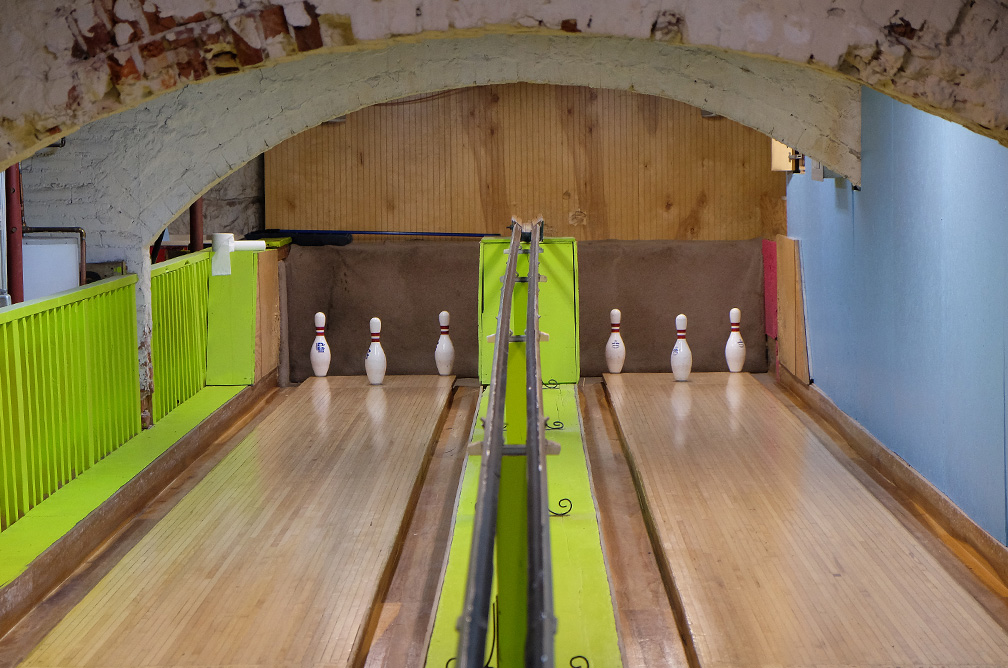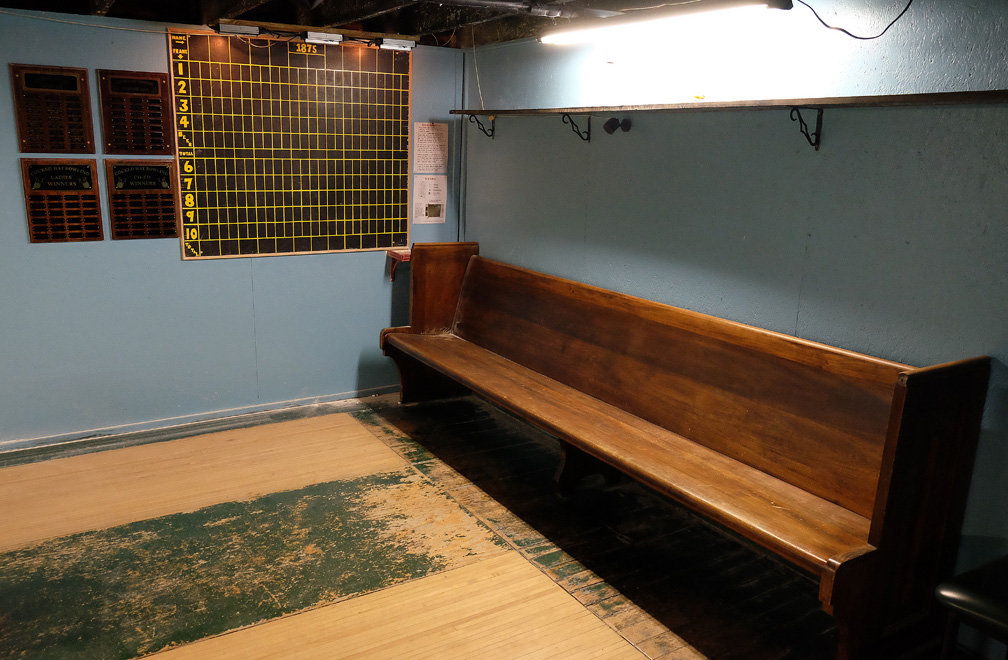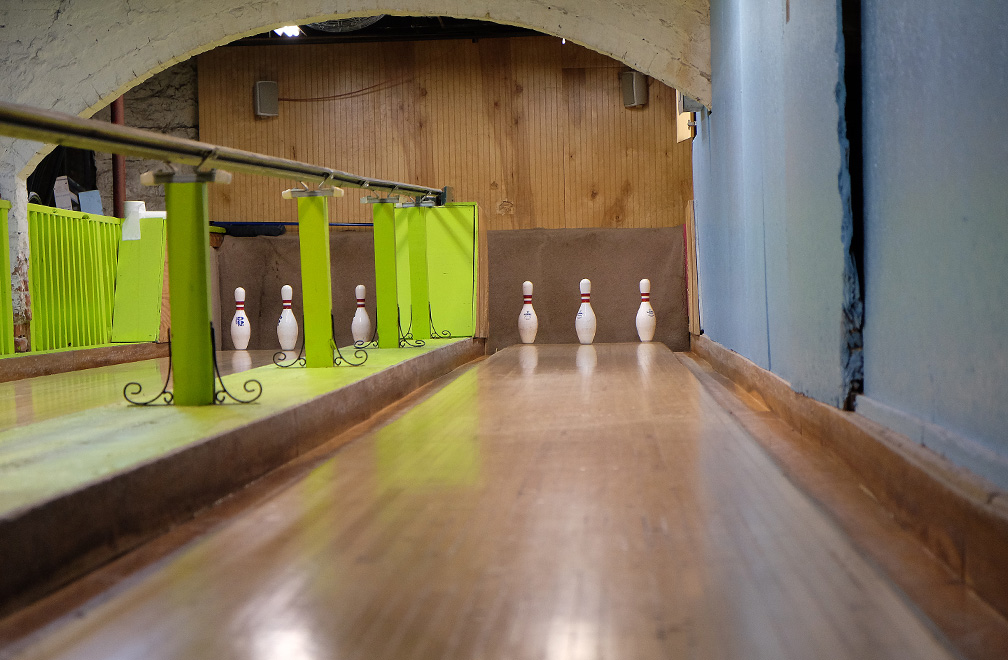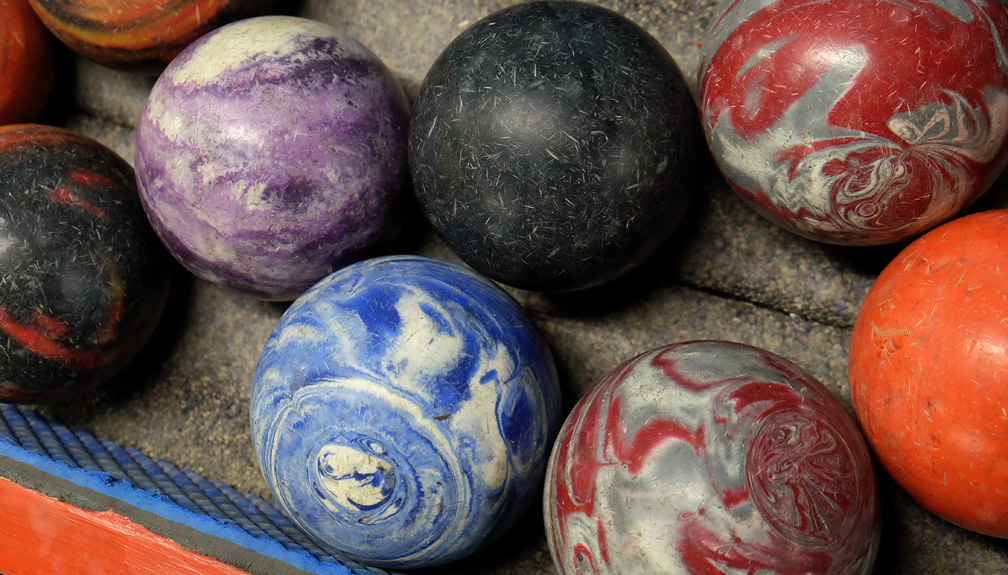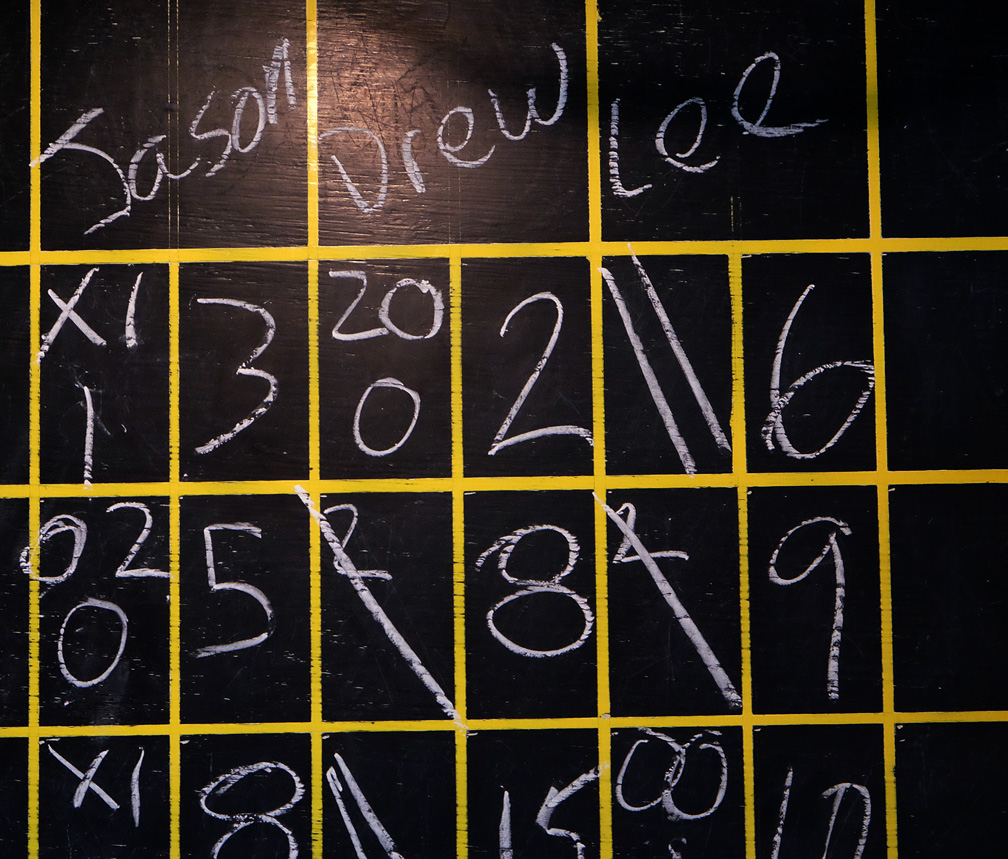Reportedly named because of the way the men would tip their hats to the side while they bowled, cocked hat bowling originated in English pubs. As recently as two decades ago, several cocked hat lanes existed in North America — most of them in taverns.
Today, the game survives in one neighborhood bar in the heart of the Midwest. After descending through a trap door in the floor at the Corner Bar, 571 First Capitol Drive in St. Charles, Missouri, you come to the last two cocked hat bowling lanes left in the United States — and maybe the world.
The game uses a lane that is about two-thirds the width and length of a regulation tenpin lane. Three standard tenpins are used in a 1-7-10 formation. The balls are smaller, like the ones normally used in duckpins.
Score is kept on a chalkboard and is similar to duckpin or candlepin bowling. Bowlers get three deliveries in each of ten frames. A strike counts 3 plus the next two balls; a spare is 3 plus the next ball. Knocking down 3 pins in 3 balls results in a score of 3 for the frame, but no carry over to the next frame. Consecutive strikes result in a 9 for each frame, so a perfect game is 90.
The Corner Bar building was originally built in the 1860s as a military school. The lanes were put in sometime around 1875. Leagues are hosted here several times a week; some bowlers have been coming here for three decades or more.

